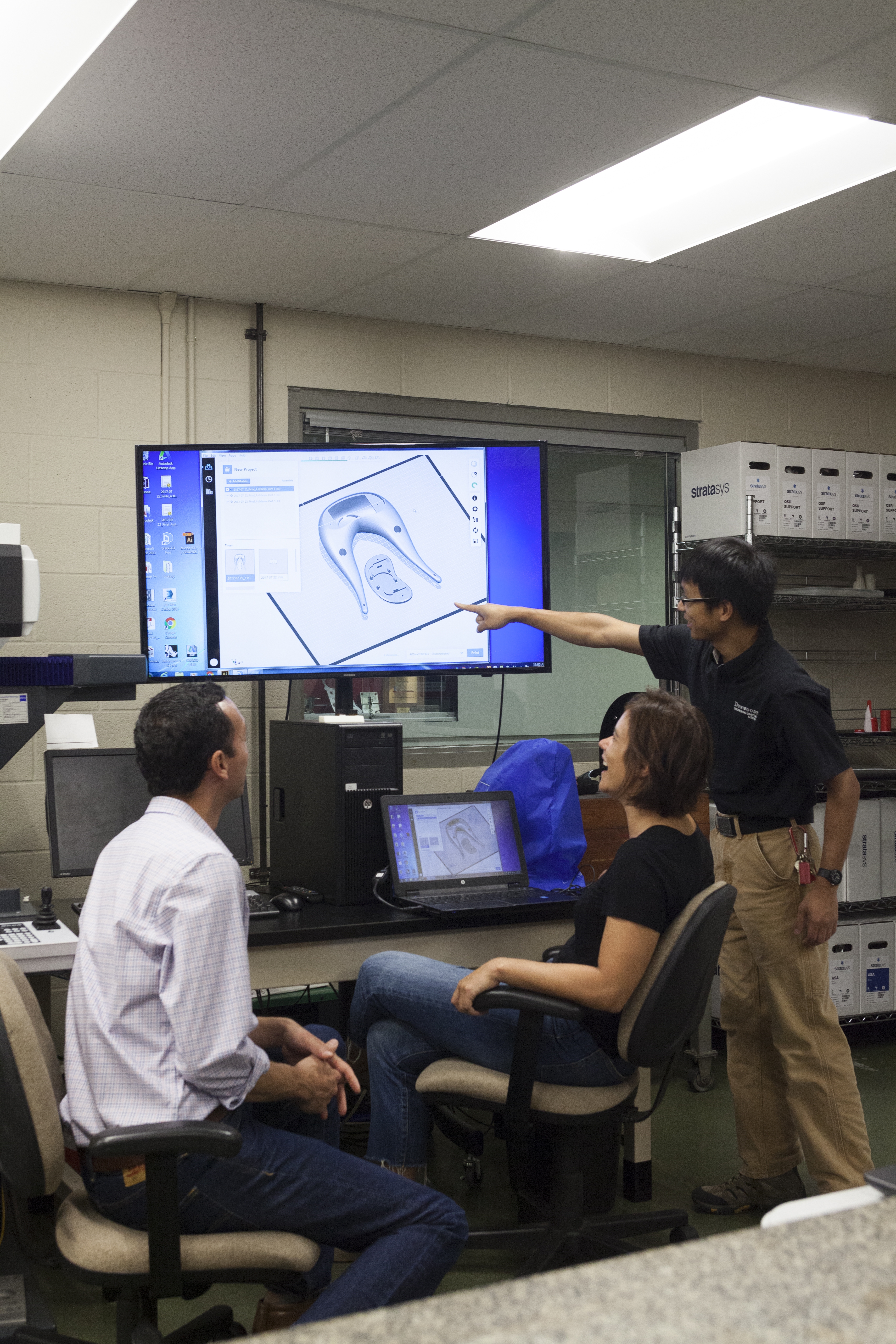With its colored lights and uncanny vibrations, Mia’s Divining Rod appears to work the same way its ancient inspiration did in ostensibly helping people find fresh water—with a little magic.
In fact, the winning proposal of the third annual 2016 3M Art and Technology Award has an internal logic, powered by the kind of like/dislike feedback we’ve become accustomed to in online dating, shopping, and other aspects of digital life.
Here’s how it works. Starting October 19, Mia visitors can check out a rod at the Divining Rod kiosk on the third floor (gallery G310). As you move through the museum, the device senses your location, and a colored light glows in relation to colored labels on the walls. Scan the label, and like or dislike the artwork by pressing plus or minus buttons on the rod. Based on this feedback, the rod will lead you to another artwork it thinks you’ll appreciate—follow its colored lights through the corridors like points on a compass.
Molly Reichert, the Divining Rod’s co-creator, says she hopes the device leads people in unlikely directions, to unexpected artworks or ones they simply hadn’t noticed before—either way, a personalized experience unprecedented in museums.
Reichert and co-creator Ben Arcand won $25,000 for their idea, and an additional $25,000 to develop it, a substantial reward meant to bring the innovative thinking of the tech field to bear on art—and vice versa. Reichert is a founding faculty member of the first professional architecture degree program at Dunwoody, in Minneapolis. She is also a designer, and a partner in Futures North, an award-winning public art collaborative. Arcand has spent more than a decade in the medical devices industry in the Twin Cities as an engineer and product innovator, with 18 medical device patents to his name. Other collaborators on the rod project include Max Hoagland, a hardware/software designer and programmer; Blaine Garrett, a designer and programmer who worked on the algorithm; Katie Garrett, a graphic designer; and Cory Huseby, who helped with fabrication.
Reichert and Arcand hatched their idea while walking through the museum, feeling a bit overwhelmed by the size of both the building and the art collection. They wanted some way to help visitors get the most out of their time. But initially their team knew less about what they wanted to create than what they wanted to avoid creating: yet another app or screen-based tool. “We spend enough time on our devices,” she says. That meant making a device from scratch, working out wi-fi connections, and creating their own algorithm. Garrett relied on something like Netflix’s algorithm, which requires a lot of preference-gathering at the outset.
But they were careful not to trap their users, like so many digital tools, in their own information bubble. In fact, having begun their work shortly after the 2016 presidential election, in which “filter bubbles” and social-media silos arguably played a major role, they worked hard to provide options and opportunities to break out and explore. Visitors might end up in front of “controversial” art—a work that visitors have liked and disliked in equal measure. And the device has a “wild card” mode in which the users can scan any work around them to set them on a new path.
Indeed, since only certain objects in the museum could be selected for the project, based on their location in the building, the development team could not feature only its own favorites. And that is perhaps as it should be. Too often, Reichert says, data tracking and algorithms can leave people feeling like decisions are “out of our control, like [an algorithm] is controlling us,” instead of the other way around. She was only too happy to introduce a predictor that ultimately is unpredictable.
UPDATE:The Divining Rod will be available at Mia beginning October 19 on Thursdays and Fridays from 6 to 8 p.m., Saturdays from 10 a.m. to 2 p.m., and Sundays from 11 a.m. to 2 p.m. A previous version of this story reported that the Divining Rods would be available Saturdays from 10 a.m. to 5 p.m., and Sundays from 11 a.m. to 5 p.m. Visit the development team’s project blog here to learn more about how they made it.
Want to apply for the 2017 3M Art and Technology Award? Submit your idea here. The contest closes December 1, 2017.



